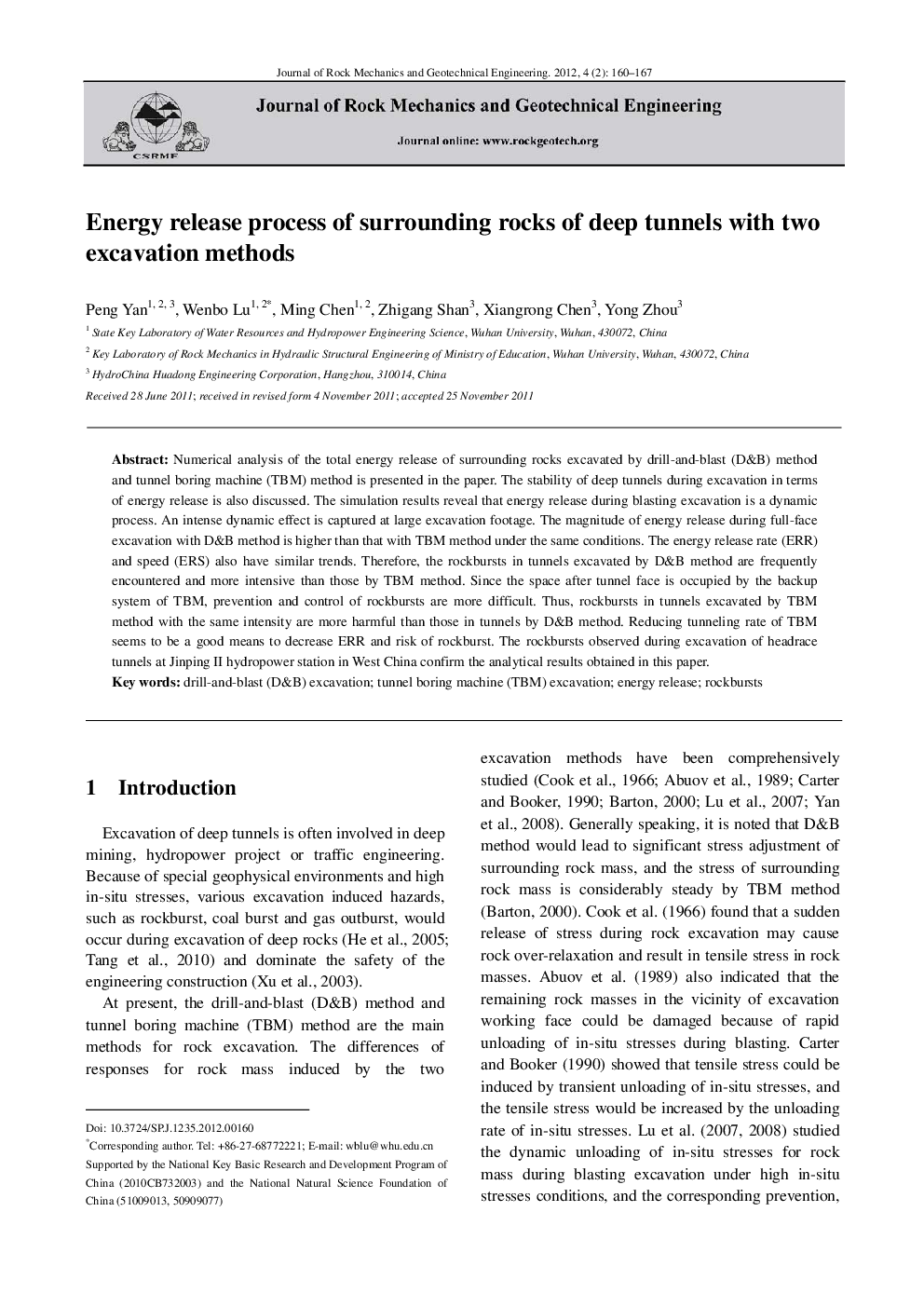| Article ID | Journal | Published Year | Pages | File Type |
|---|---|---|---|---|
| 286837 | Journal of Rock Mechanics and Geotechnical Engineering | 2012 | 8 Pages |
Numerical analysis of the total energy release of surrounding rocks excavated by drill-and-blast (D&B) method and tunnel boring machine (TBM) method is presented in the paper. The stability of deep tunnels during excavation in terms of energy release is also discussed. The simulation results reveal that energy release during blasting excavation is a dynamic process. An intense dynamic effect is captured at large excavation footage. The magnitude of energy release during full-face excavation with D&B method is higher than that with TBM method under the same conditions. The energy release rate (ERR) and speed (ERS) also have similar trends. Therefore, the rockbursts in tunnels excavated by D&B method are frequently encountered and more intensive than those by TBM method. Since the space after tunnel face is occupied by the backup system of TBM, prevention and control of rockbursts are more difficult. Thus, rockbursts in tunnels excavated by TBM method with the same intensity are more harmful than those in tunnels by D&B method. Reducing tunneling rate of TBM seems to be a good means to decrease ERR and risk of rockburst. The rockbursts observed during excavation of headrace tunnels at Jinping II hydropower station in West China confirm the analytical results obtained in this paper.
